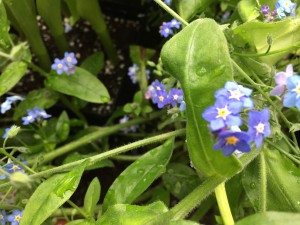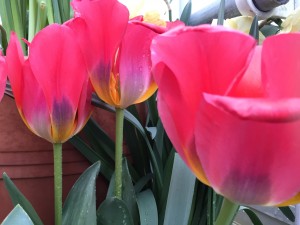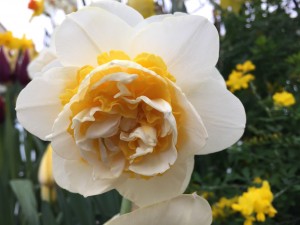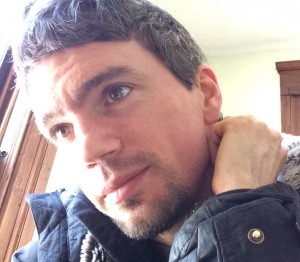by Ben Ross
Things I Need to Speak Before I Can Fall Asleep
Maybe before I can fall asleep tonight, I need to speak my truth.
My truth is that grief is with me nearly every day of my life. And I’ve had to work very hard, to look deeply into my experience again and again, to read and reach out and find help from therapists and friends and groups of many kinds, in order to understand what exactly could account for this Moon of feeling orbiting the Earth of my body, shifting the tides inside me with its weight and size.
My truth is that, even though there have been losses in my adult life and childhood that undoubtedly account for some of this, I don’t believe these losses really do account for the level of grief I experience, when I consider how fully it can take over my body and mind. When it’s stuck, a network of constrictions takes hold in my body, cutting off the flow of oxygen by tightening and clamping muscles in my gut, chest and throat, with distorted thoughts and ruminations that, when they reach a certain level of intensity, I label as either anxiety or depression. At these times, my legs and shoulders tighten, as well, and my low back, and my hips, so that my body seems overall to be bracing against against some assault, like a giant wave is coming straight at me, and my whole being is preparing its best defense.
And yet it’s not a wave from outside that I think my body is seeking to defend against; it’s a wave from inside. It’s my own life energy that seems threatening, the force of the sadness inside me, the fear, and the anger. All three of which are held in this mysterious life-giving energy called grief.
That’s my other truth, the other half of it, the Earth anchoring the Moon. This grief is actually deeply, inherently, and undeniably good, when the distorted beliefs are seen as no more than words and pictures in the mind, projections that seek control but are actually only appearances in a present moment that is always larger and fuller and a whole lot more alive than they are. Then the basic energy of the grief is free to move, and it moves on its own, sometimes slowly, sometimes in a big wave all at once, held in the cradling shores of a writing practice (I love The Work of Byron Katie, though my practice of it is in many ways something I’ve made my own), or time in nature, or the voice of a trusted friend, or the profound communion that happens in the relationship with an empathically-attuned and skilled therapist, or any container that is gentle and loving and strong enough.
This basic energy of grief is life-giving, because when it’s felt just as it is without the story attached, held in safety, it is experienced as presence and aliveness. In the midst of feeling it, my senses come alive, compassionate thoughts enter my mind (or my mind is transformed into compassionate thinking and empathic feeling) without effort to have made this happen. Tenderness fills my heart; the heart is revealed as tenderness. Simple colors (often the color and grain of wood tables and floors come first, for some reason) are revealed as vivid and beautiful, sensations are felt clearly and deeply, as the space holding the sensations becomes apparent. This space seems to be woven through all experience, so that the sensations are felt to be like little galaxies in the body, appearing to have the shape of a single structure when viewed from a distance, but actually mostly consisting of space.
And at these moments, it feels clear that none of this is special, or magical, or otherworldly. It’s the same exact world that was there before the belief was seen as no more than a belief, and the grief was accepted and seen to be already in flow. Though at that moment of clear seeing, what seemed like “grief” moments ago could more accurately be named love, or not given a name at all.
It’s the ordinary world, and the ordinary, connected, human heart, and the ordinary body at ease, with ordinary breath breathing it, and the ordinary mind when freed of the sense of impending threat, that are so utterly and unutterably beautiful. In clearer moments, I see that this ordinary-and-extraordinary life is always shining in others brightly and plainly, and that the truest response is to admit that I don’t really know anything, and to simply stop and be reverent and listen, and just let the goodness of it be, feeling this shared current of life-in-movement.
It’s like the body-mind was bracing against a wave, and then was revealed to be made of nothing but water: regular, ordinary, connecting, holding, water.
A Personal History of Grief
I have a story that makes sense of this experience, for me, though I don’t know if it’s ultimately true. It seems to help me to have this story, so I hope in telling it you find some relief, something to relate to that makes sense of your own constrictions and tidal movements of grief, if that feels like a description that matches your experience. The story goes like this:
When a helpless infant enters the world, they are completely dependent on their caregiver not only for physical nourishment and protection, but also for the formation of a basic sense of self. And that basic foundation of the self is formed through experiences of simply being met, being mirrored in the eyes and the face of the caregiver, who is experienced as being the entire world at that point in life. And this first relationship forms the basis for the sense of being welcome, the sense that one’s basic feelings are okay, that one’s life energy has a place in this universe, can be held, does not threaten basic connection, safety, or the sense of reality itself.
When something disrupts this mirroring, the system learns to shut down, and to experience life energy, basic feelings, the needs of the body and the desire for connection as themselves threatening. And this often has nothing to do with any active impulse on the part of the caregiver to harm their child. This catastrophic disconnection could come about simply because a caregiver is ill, or depressed for any number of reasons, or struggling to survive in the midst of a war, an economic collapse, a famine, or a society caught in an extreme ideology that undermines the bonds of ordinary human care and connection, failing to support caregivers in their incredibly demanding roles as being the entire world to a developing child, without a deep (or sometimes even a superficial) network of support.
One way this extreme ideological system could show up is in the form of a culture that’s become extremely disconnected from and unwelcoming to the vulnerable aspects of life, as more and more interactions become subject to a competitive battle for resources that are hoarded by some and denied to others, on the basis that the “others” are not worthy, not normal, not together, not tough, not white or straight or able or Christian enough (in a narrow and upside-down misinterpretation of Christian teachings). Another form of this is seeing how modern industrialized culture isolates workers and deadens their emotional beings with repetitive labor that everyone recognizes as being cut off from a sense of deeper meaning or connectedness to the earth or other human beings in a deeply (or often even a superficially) nourishing way.
Or some combination of all of these factors, as well as many others. In my case I know one major factor in my own developmental story is that my mom was sick during the first few months of my life. When she sought medical help, she was told she had Lupus and would likely never recover. Understandably, she became depressed. I know this because I was lucky to have had a mom who loved me deeply, and shared about the early months of my life when I sought to understand my experience of the world as a grad student in a counseling psychology program.
The story has a generational piece, being that any side of my family, if you trace back far enough, has undergone the experience of war, famine, and oppression. My mom’s maternal grandparents in particular lived in poverty in Ireland, and their parents (my mom’s great-grandparents) experienced famine and oppression on the basis of being deemed subhuman, while food from their own land was being exported to England (a time known as the potato famine and often referred to in a detached, humorous manner, while it’s estimated that between 500,000 to 1.5 million people died of starvation in Ireland during this time).
Traumatic experiences on this level make it difficult to trust life itself, to attach to a vulnerable being who may or may not survive the hardships of a threatening time, and to keep extending the basic connection and tenderness that is the substance of the human heart when facing overwhelming shock and the sense of self-blame that is often the result.
My grandmother herself was a vibrant, creative, beautiful, wise, open-hearted and fearlessly outspoken woman who was a huge inspiration in forming the person I want to show up as in the world. Yet trauma often shows up hidden under layers of relatively healthy ways of being – it stays deep in the body and psyche and braces against attachment, against the full force of life energy that’s been cut off from in a moment of overwhelm, originating in a time that may not even be remembered. Therefore these traumas have no context in which they can be understood, brought to awareness as the grief and life energy that they are, where they can be met and healed in compassionate presence.
This story could go on. The level of generational trauma carried in everyone’s family tree is as mind-boggling as the stars in a galaxy. And ultimately made of light and life energy just as stars are.
A Collective Story of Healing, Transformation and Growth
This is the big truth that I want to tell right now, the heart of it. I think we’re at a point – by we I mean human beings generally – where these wounds from generations ago are able to be seen, held, understood and welcomed into the healing found in connection, awareness, compassion, and a consciously-created container of welcome. I don’t think this is just my story at all (nor do I think I’m living it any better than most people, so I write because writing is a way I feel alive and love to contribute, and not because I think I have a position of special authority or expertise).
I believe that this story – the story of the healing of generational wounds happening on a large scale – is a good story in part because I encounter these same elements in a variety of books and blogs from many others who have gone through something similar. I believe the story is a good one because of the writings of Donald Kalsched, Stephen Johnson and others on object relations (the experience of early infancy) and how deeply they’ve described my own experience in life, putting words to something that seemed unnameable before. I believe it’s a good story because of the extensive research into the importance of attachment in forming a basic sense of safety in the world. I believe it because I sit with clients and see how the deepest suffering comes in the form of a wave of overwhelm that has the feeling of a reenactment of trauma from the first months of life. Mostly I believe it because I often seem to see and feel the infant looking out from peoples’ eyes, seeking simply to be met, to be seen, and once seen, this awareness of others’ basic, beautifully-childlike desire to be loved doesn’t seem to completely go away (or, at least, it keeps resurfacing even when it gets obscured or forgotten).
The desire for basic mirroring is here for all of us. One reason for this desire is to find the nourishment of connection that is needed throughout the life span. The other reason, the one often-ignored or not seen, is to meet this inherent wound of abandonment in infancy. And that wound is really the big, central wound that comes up whenever the later wounds of illness or relationship breakdowns or cultural oppression or war or anything comes up. The basic questions seem to be: “Am I safe, am I welcome, or is my being somehow bad, somehow to blame for this? Is life trustworthy?” These essential questions are the ground of all the others, as far as my own life experience and my best understanding tells me.
So I think this is really our story.
And ultimately our story is about how good and compassionate and connected we all are, in our actual experience, in our actual hearts, in our actual awareness, when the negative projections and judgments and comparisons that distort our basic nature are seen as being only words, pictures and sensations, and not the reality of who we really are. Then the constrictions in the body-mind loosen, and real life returns, even though it’s always here all the time.
What we really are is beauty itself. We are children of this incredibly alive, complex, diverse and creative planet. Our worth is not defined by the amount of money we make or our race or sexual orientation or physical or emotional capabilities or mental status or supposed level of normality or where we grew up on the planet or what schools we went to or what is in our records or resumes or in status of any kind.
Our worth is defined by our hearts, by the deep connection we share as living beings, by the meeting of our eyes and recognition of our selves there, by kindness and the deep desire to understand and empathically relate, with all the boundaries and time this can take in order for safety and trust to be established, but with this essential truth shining as the most real thing anybody feels and is.
It doesn’t seem this way because of the constriction, because of the basic life energy being cut off from in the body, the love that appears as anxiety, as bitterness and resentment, as self-pity, as blame, as shame, as a million kinds of strangled beauty. There’s nothing wrong with any of these states – it’s just that the primary pain in any of them, and the primary reason they appear as something with a label such as “anxiety” or “shame”, as a thing that seems to be overtaking or attacking the body from the outside, rather than life energy that is emerging from deep within and flowing through all on its own, is because of the fight against (or the flight away from) this basic grief. It seems to me this is true for nearly everyone to some extent, but especially for those of us with this wound in the first 6 months of life, which I think is a whole lot of us.
This is how I see it (for now, anyway): that the anxiety and shame and resentment and other feelings are almost always ways to seek control over and avoid grief. I think all of these states of suffering and struggle exist primarily out of the fear that this wave of grief will come and obliterate the self, that there will be nothing left but a chaotic mess of overwhelm, confusion and helplessness. Which might have been how it truly was in infancy, and why these feelings were cut off from in the first place – because the body-mind has wisdom.
And it’s also important to recognize that it’s not true now. Now, the suffering of the body-mind can be listened to as signals that constricted life energy is coming up, has reached the shores of awareness, and is aching to come back to us. Because we are water, ocean, belongingness and life itself.
Ways to See Through
For me, approaching the release of negative thoughts and opening to the depths of feeling in my body has been a long and slow process. It’s taken a lot of deliberate practice, creating safe space in which to feel these feelings, feelings that flow through me all on their own when the negative projections and beliefs are seen as no more than projections and beliefs, occurring in the space of awareness.
The most effective container I’ve encountered has been a writing practice called The Work (which I mentioned earlier) that involves naming beliefs and projections and investigating whether they are ultimately life-serving or true to my actual, lived experience, with a focus on who I am when these negative projections are seen as nothing more than words and pictures. And, in this seeing, who I am turns out to be the space holding feelings and thoughts, and the energy of the feelings and thoughts (freed from fusion with beliefs), and within all this, compassionate care for my body, thought that seeks to understand others, the direct experience of the senses, embodiment, and aliveness itself.
One way to think of The Work (using the language of Acceptance and Commitment Therapy) is as a process of thought defusion (meaning, de-fusing or dis-identifying from thought) and acceptance (allowing feelings and sensations to flow through as they are). The real heart of these practices, in my experience, is not to determine the rightness or wrongness of the particular beliefs coming up, or to seek better, more positive, beliefs (though being empowered to choose or simply notice the arising of life-serving beliefs is one healing effect).
The freedom is in seeing the ultimate nature of any belief as no more than a word, or a set of sounds, like the sound of traffic passing by on the road, or the sounds of a radio. And, likewise, to see any feeling as only a feeling, held in a larger space of beingness, awareness and presence (or whatever name one would give to that which observes the thought or feeling, and makes up its essential substance, and is therefore larger than it, like the ocean both holding and making up the substance of waves).
There are thousands of practices that can serve these same purposes (I particularly have a deep love for tonglen meditation, and have been inspired by something called the Living Inquiries, and found deep usefulness in the practices of Acceptance and Commitment Therapy more recently). I think it depends what someone loves and feels a sense of ease and enjoyment with in terms of finding a workable practice for themselves. I believe in exploring the choice of this practice in a gentle way, coming back to what only the one making the choice can know in their own intuition and from their own experience. This choice of a practice (or method or way or whatever you’d like to call it) is similar to choosing a place to call home, or a friend or partner to share vulnerability and aliveness with, to be witnessed and to witness life with, or a therapist who we feel truly hears and gets us, and whose reflections we can trust.
No one else can be the expert on these choices any more than on the choice of what a good practice would be for anyone, though I think there are many people providing wonderful options. I feel this process of choice is best approached in the attitude of reading a menu and trusting what appeals, rather than as seeking one “right” or ultimate practice based on someone else’s proclamation. Learning to trust ourselves to make the choice is part of listening to the body and healing the wound of seeming to be inherently bad or incapable.
Gentleness and Trust
For me, it’s so important to remember that in the middle of any process of opening, or after or before, I often need to slow down so I can attune to my body’s needs, listen for the desire to take a break, or to lie on the floor as I sob, or to place my hand gently over my heart, or hear the voice of a trusted friend, or make a gratitude list and focus on beauty and connection, or take time in nature, take a walk, have some tea, or so many other forms of protection, care, nurturance, gentleness, slowness and kindness.
I also notice that when a wave of tears comes, it can be deeply trusted, because in the midst of it and in its wake there’s an openness of heart, and ability to receive love, and a deep current of desire to give love or simple care and presence to others out of a lived, felt recognition that this is a joy and a gift to myself at the same time. And then there’s growth of many kinds: creative openings, moments of deeper sharing in community, moments of fun and playfulness, moments of meaningful connection (so much is said in little instants of eye contact!), and trust in my voice and authentic truth. There’s this writing right now, as an example of that. It would have been overwhelmingly scary to me to share any of this only a few months ago – I’m glad I waited, and glad that the moment to share seems to have arrived all on its own.
For me this movement toward a new way of living has taken years of work, as bit by bit the constrictions release, and constrict again, and new layers surface, and I see the ocean welcoming and being all of it. Though it’s gradual, every moment of this journey is whole and beautiful. There’s no rush, though I’m tired of being drained, of being heavy, of feeling the energy cut off in my body-mind so often. I think everyone is tired of these feelings, though even in this tiredness, there’s nothing other than beauty, nothing that isn’t held already in our own basic, aware presence.
While there’s a long way to go, every step is wholly-loved in and of itself. So it’s possible to appreciate every moment (and even the non-appreciation of a moment). And it’s good to know others are out there also feeling their own grief, welcoming their life energy back, going into the depths, going through them, healing, finding out they are ocean too, reminding me, letting me remind them.
Statement on Behalf of Life
This is what we’re here for, at this time, to find out that our traumas and constrictions and grief are made out of life energy, out of tenderness, out of love. To heal our ancestors’ pain and stop passing it on, to each other and to the Earth itself. To live on this planet in a way that honors the good heart of life, even in the midst of its traumas and failures and heart-shattering disappointments.
And maybe there most of all, where we can be compassionate, can know ourselves as compassion, and find our deepest fulfillment in that knowing of our true selves. Honoring the incredibly precious opportunities we have to touch one another and know ourselves as bigger than isolated dots. Because we’re not dots, and can’t be captured in the computer algorithm of any website, or be understood fully by any psychological study or theory (including the ones I outlined in this writing), or defined by any label, or lose our inherent belongingness or be cut off from life by any trauma, even when it seems to encompass the basis of our lives or sense of self. Because we are the living universe, already, waiting to be uncovered, seen, and known right in the heart of our ordinary, shared lives.
There, I’ve said it. I think I can sleep now.
P.S. This piece was written out longhand laying in bed in the middle of the night some days ago, and has been edited, revised, and added to since then. I decided to keep the first and last sentences in order to convey the physical sense of urgency I felt to express all of this, and because I think the time of the writing (the middle of the night) coincides with the theme in an interesting way. Because it felt dishonest to present this as something that had emerged entirely as it is in one night, I wanted to let you know that it’s been worked on since.
Thank you for receiving it! With love, Ben
Ben Ross is a person who lives in Western Massachusetts, where he practices getting out of his own way so he can clearly hear people as the love they already are, share with them in the deep goodness of life in all its vulnerability and struggle, and be as outrageously sensitive and creative as life wants him to be. He graduated from Naropa University with a Master of Arts in Contemplative Psychotherapy and works as a therapist in community mental health.
















Chaya, this is beautiful!
Thank you for sharing your wisdom and thoughts.
Thanks Tara. Ben Ross wrote this 🙂
Every jump in geometry dash breeze is thrilling. If you don’t calculate it correctly, you’ll have to start over from the beginning, creating a feeling that is both tense and challenging.
پرداخت هزینه دلاری اشتراکهای TradingView برای کاربران ایرانی بسیار سنگین است، اما برای ترید دقیق نمیتوان از قابلیتهای نسخه پرمیوم و دادههای دقیق گذشت. یک راهکار بهصرفه و مطمئن، تهیه اشتراک پرمیوم تریدینگ ویو از طریق مجموعه شوپی است. با این سرویس، بدون نیاز به کردیت کارت و با هزینهای مناسب، به تمامی ابزارهای تحلیلی پیشرفته دسترسی خواهید داشت.